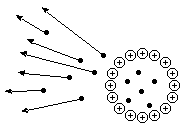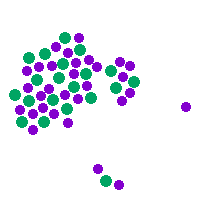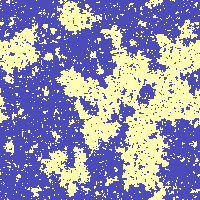Old Physics Educational Software
Written by Daniel V. Schroeder and others.
All of this software is available free, as is. Good luck getting it to run on modern platforms.
Links to newer substitutes are provided where these are available. Click
here to go to my main software page, which lists only modern HTML5/JavaScript web apps.
Java Applets
For those who still have a browser that will run them...
Older thermal physics applications for Mac and Windows
- Molecules is a two-dimensional molecular dynamics simulation, similar to
the Molecular Dynamics applet and Interactive
Molecular Dynamics.
This version has somewhat different features including the ability to simulate
two types of dissimilar particles.
- Ising is a Monte Carlo simulation of the two-dimensional Ising
model.
Really Old Mac Software
The programs described below were developed for the Macintosh computer
circa 1985-92. They are small, fast, and easy to use, but lack the color graphics that
everyone expects these days. As far as I know, all of them run fine on PowerPC-based
Macintosh systems, including OS X systems under the Classic environment. It might be
possible to run them on Intel-based systems using third-party emulation software, but
I've never tried this.
All of the programs described below, except for the Radiation program, were
written by Dan Schroeder and Michael Martin.
To download an archive of all of these programs,
click here (.hqx format,
213k). The Radiation program is in a separate archive (see below).

- E-Field shows the electric field (represented
by arrows) of an arbitrary two-dimensional distribution of point charges
or of infinite-line charges (running perpendicular to the screen).
It has a very easy user interface and is suitable for high school or
college introductory courses. (Unless you're on a pre-OSX Mac,
use the EField applet instead of this program.)
- B-Field is similar to E-Field but shows
the magnetic field of an arbitrary arrangement of infinite wires
running perpendicular to the screen.
- Radiation draws and animates the electric field lines
around an accelerated point charge undergoing various motions, as
described here.
This program was
created by Blas Cabrera,
Sha Xin Wei, and Jim Terman; it is now in the public domain.
Click
here to download this program (.hqx format, 40k). (Unless you're on a pre-OSX Mac,
use the new Radiation Applet instead of this old program.)

- Fourier analyzes a user-drawn wave form (within a finite
interval) into its first 15 Fourier components, or synthesizes a wave form
from user-specified coefficients.
For a modern web version see Wave Builder.
- Q-Wave is similar to Fourier, but can analyze
a wavefunction using any of three different sets of basis functions, corresponding
to box, harmonic oscillator, and linear potential energy functions.
For a modern web version see Wave Builder.
- Schrodinger animates the time dependence of a
wavefunction built from the first
six basis functions for either the box or harmonic oscillator potential.
(Unless you're on a pre-OSX Mac, use the new Quantum
Square Well and Quantum Harmonic
Oscillator simulations instead.)

- Quantum1D is a bare-bones animation (with no user interface)
of one-dimensional scattering of a wavepacket from a step potential. (Unless you're on a pre-OSX
Mac, use the new Quantum Barrier Scattering
simulation instead.)
- Spins allows the user to link together Stern-Gerlach
devices to explore the mysteries of quantum mechanics for a system that
is mathematically very simple. This program is described in
AJP 61, 798-805 (1993),
arXiv:1502.07036.
Here is a version for the modern web. There is also a
Java version
created by David McIntyre of Oregon State University.
Last modified on 5 March 2017.






